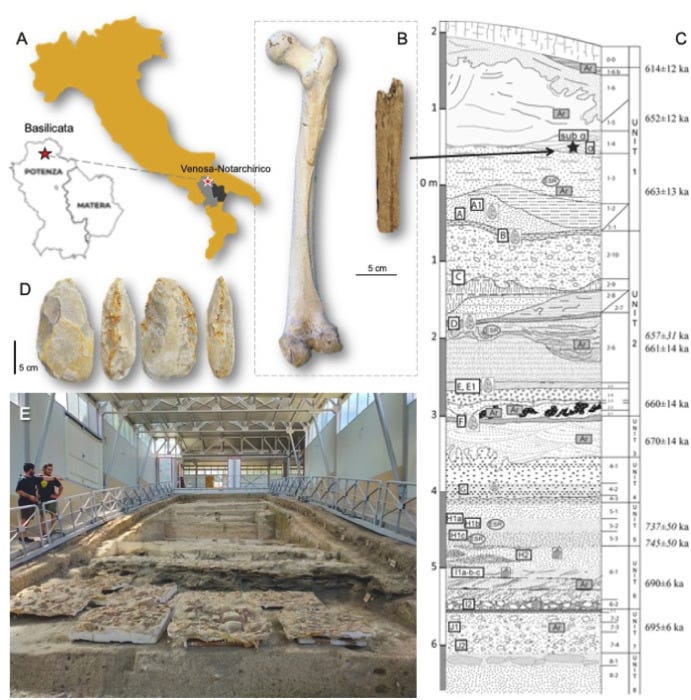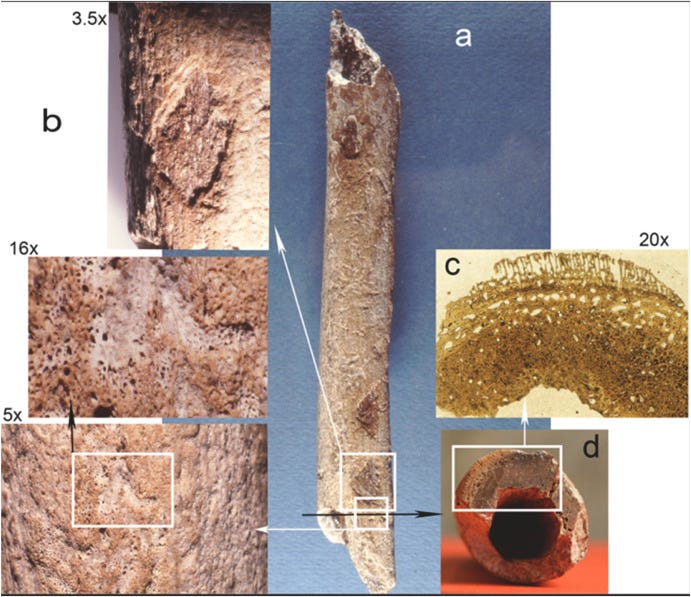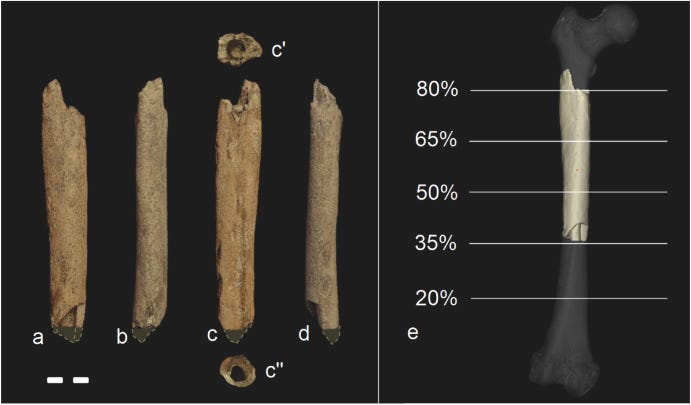Ancient Health Insights: The Oldest Hominin in Italy Revealed
Written on
Chapter 1: The Discovery of Italy's Oldest Hominin
The discovery of a Homo heidelbergensis adolescent in Italy has revealed significant information about the health challenges faced by ancient human ancestors. This individual, the oldest hominin found in Italy, exhibited signs of bone pathology.
Researchers have uncovered that this particular hominin faced considerable health issues, providing a glimpse into the struggles of our ancient relatives.
Section 1.1: The Notarchirico Site
Italy's rich prehistoric history is highlighted by various hominin species, including Homo neanderthalensis and Homo heidelbergensis. Among the remarkable finds is a femur attributed to the oldest hominin on the Italian Peninsula.
In 1985, a fragment of a human femur was unearthed at the renowned Notarchirico site in Venosa, Basilicata. Recent excavations since 2016 have updated our understanding of this site, particularly its dating. Utilizing 40Ar/39Ar dating techniques, researchers have determined that this sample dates back to the Middle Pleistocene, positioning it as one of Europe's oldest hominins. The stratigraphic analysis indicates that the site was intermittently occupied between approximately 695,200 and 614,000 years ago, during various interglacial and glacial periods.

The geographical context of Venosa Notarchirico is vital to understanding the significance of this discovery. The femur, Vn-H1, was found in the upper levels of the site’s stratigraphy and is compared to other Middle Pleistocene femurs across Europe. Notably, various Acheulean handaxes have also been recovered from this site, indicating advanced tool-making skills of the inhabitants.
Section 1.2: Analyzing the Pathology
The pathological findings associated with this femur are particularly noteworthy. Researchers have identified that the femur belonged to a young adolescent, nearing adulthood, and the bone pathology appears to correlate with the individual’s demise.
Despite the new bone growth on the femur's outer layer, most of the bone remained unaffected. However, due to the fragmentary nature of the find, pinpointing the cause of this pathology remains challenging. Researchers have explored potential diseases that may lead to such malformations. These include:
- Circulatory Disorders: Conditions like venous stasis can exert pressure, causing inflammation and stimulating new bone formation.
- Hematogenous Osteomyelitis: A bacterial infection affecting bone and marrow can lead to changes in bone structure.
- Malignant Tumors: Osteosarcoma may cause an osteoblastic response, affecting bone integrity.
- Trauma: Injuries can lead to direct impacts or soft tissue damage, influencing bone health.

Other potential conditions, such as scurvy or hypervitaminosis, could also be considered, but the broad nature of the periosteal reaction makes it difficult to draw definitive conclusions. Nonetheless, it is clear that the individual lived with this condition for an extended period, likely longer than the time required for bone remodeling.
Chapter 2: Implications for Understanding Human Evolution
The individual in question, whose sex remains undetermined, belongs to an archaic species, showing distinct morphological features that differentiate it from Neanderthals. The femur, specifically the diaphysis, lacks the epiphyseal region, indicating it belongs to Homo heidelbergensis.

The Notarchirico site has yielded 15 layers of faunal and lithic remains, representing an extensive sequence of human habitation during the MIS 17–16 periods, making it a unique archaeological site in Europe. Remarkably, it has revealed not only the oldest hominid bone from the Italian Peninsula but also the earliest Acheulean lithic tools, dating back to approximately 680,000 years ago.
In this video titled "WHY ITALIAN WOMEN NEVER GET OLD? 10 Secrets of How Italians Stay FOREVER YOUNG," the insights provided may metaphorically relate to the endurance of ancient humans, showcasing the longevity of health practices across generations.
The second video, "At 116, Italian woman now world's oldest person," emphasizes the persistent theme of health and longevity that resonates from ancient times to the present, linking past and present human experiences.
Published in Fossils et al. Follow to learn more about Paleontology.